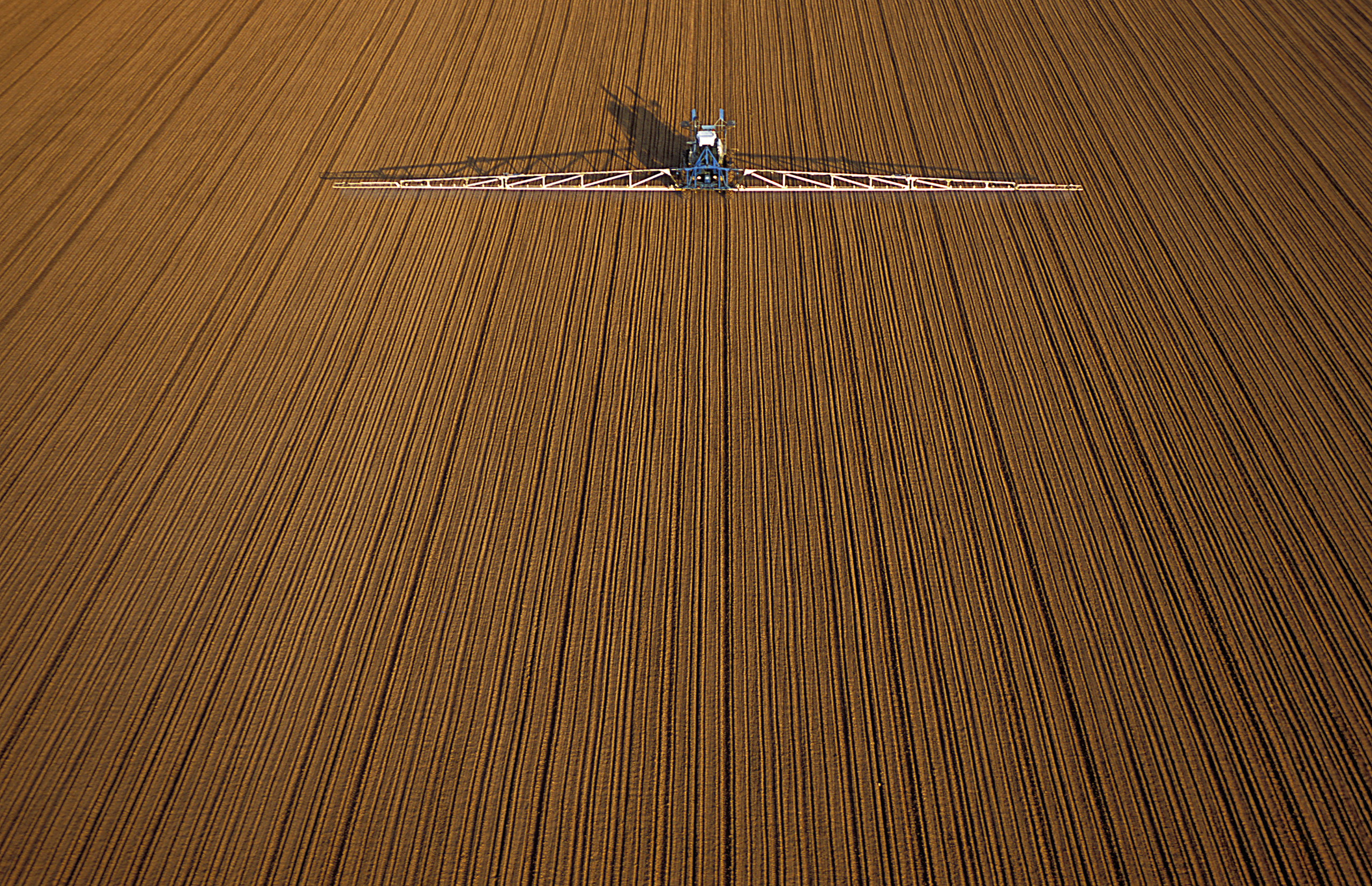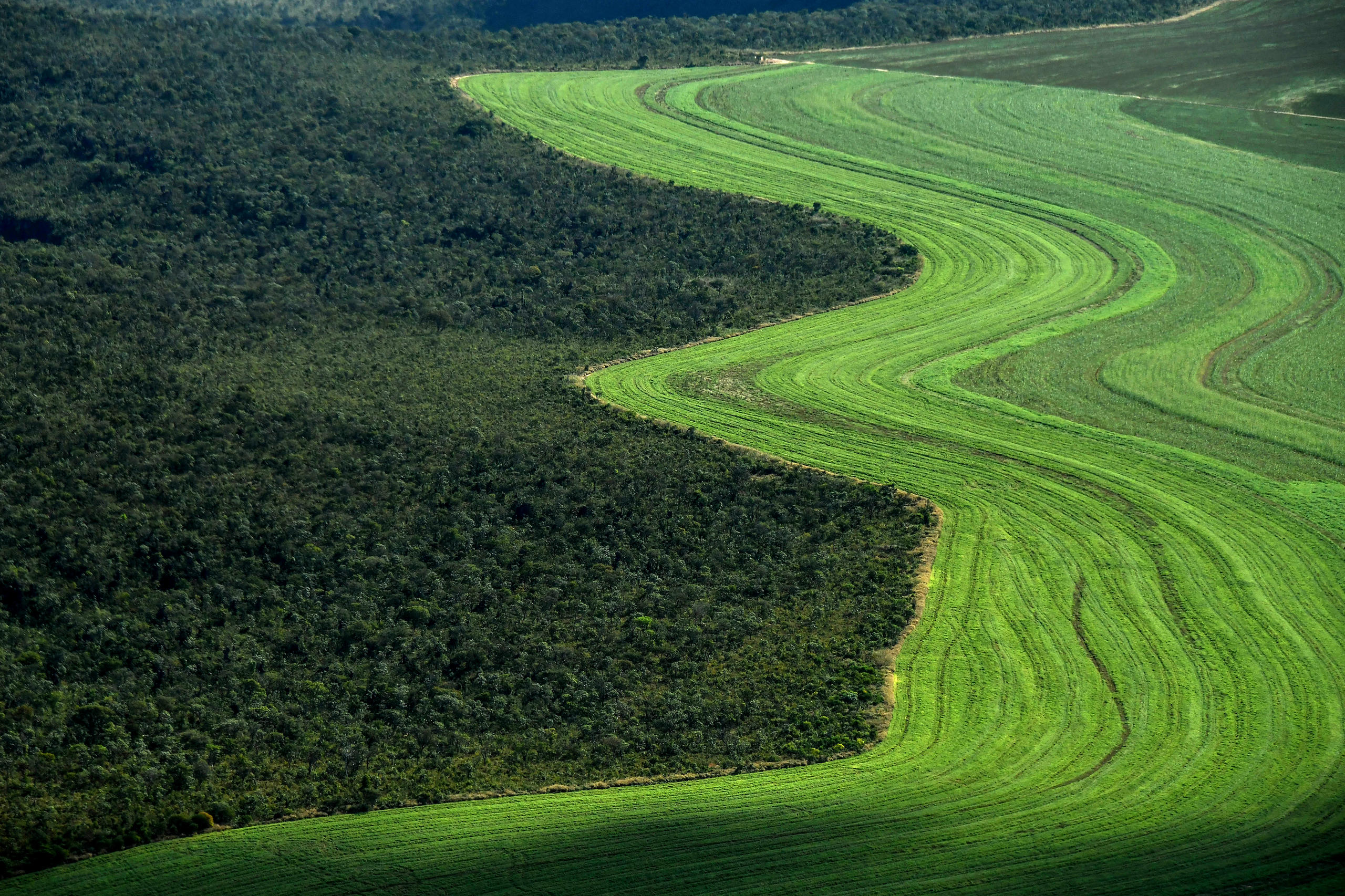
‘We are destroying the planet to feed ourselves’

Climate change and biodiversity loss are both caused by human activity and are locked in an interconnected cycle, making global action essential, says the head of the world’s leading body on species conservation.
Bruno Oberle is director-general of the Switzerland-based International Union for Conservation of Nature (IUCN). The organisationExternal link is responsible for publishing the Red List of Threatened Species, an inventory of global conservation status of plants and animal species. Oberle, 67, is the first Swiss to hold the top post at the IUCN.
SWI swissinfo.ch: You are the head of the world’s leading nature conservation organization. That’s a big responsibility at a time when scientists say the planet is facing its sixth mass extinction.
Bruno Oberle: Yes, indeed it is, but we all have a great responsibility. Taking care of nature and biodiversity is a fundamental necessity for humanity. Our existence on the planet and the survival of our development model depend on them.

Which ecosystems are suffering the greatest loss of biodiversity?
We see significant losses everywhere. The number of threatened species is particularly high in biodiversity hotspots such as tropical forests, but also in somewhat more unexpected ecosystems. For example, in the Mediterranean maquis. Freshwater ecosystems have also suffered particularly dramatic declines.
Over 38,500 species are threatened with extinction. This represents 28% of the nearly 140,000 species studied by the IUCN. Among the threatened species, 26% are mammals, 41% amphibians, 14% birds, 33% corals and 34% conifers.
In recent years, the situation has worsened for species like the Komodo dragon. Sharks and rays are also in decline due to intensive fishing and the climate crisis.
In contrast, the status of four commercially fished tuna species is improving, IUCN reports.
In Switzerland, almost 60% of the 1,000 species of insects are threatened or potentially threatened, according to the first in-depth government report on insects, published on September 7.
Urbanization, overexploitation, deforestation and pollution are just some of the factors contributing to biodiversity loss. Which of these most concerns you?
It is dramatic to say, but it is food production. There are so many of us living on Earth and we all need to eat. That is why we need agriculture of a certain size, using large areas. But agricultural practices are fundamentally changing the structure of the land. The complete destruction of ecosystems to make room for agriculture and the negative influence on those that remain have a negative impact on biodiversity. In order to feed ourselves, we are destroying the planet.
But it doesn’t have to be this way. We can imagine farming practices and an agri-food system that provide enough good quality food for all people, while at the same time promoting biodiversity.
Legal experts from many countries would like the International Criminal Court in The Hague to recognize ecocide, or illegal acts that cause widespread or long-term damage to the environment, as a crime against humanity. Do you agree with them?
Legal concepts always have an impact on our way of thinking, so just discussing them is good. Obviously, any legal concept only becomes operational when it is transformed into a law. For the time being, there are few countries that consider ecocide in their legislation.
In addition to ecocide, we should also reflect on its mirror concept, namely the rights of nature, or the right to the existence of a species or ecosystem. In some countries, this issue is on the table or is already at the legislative level. In Ecuador, the right of nature has been included in the Constitution, while New Zealand has given legal rights to some rivers sacred to the indigenous peoples.
Global warming is already having irreversible impacts on nature, according to a recent United Nations report on climate change. At the same time, rising temperatures allow species to colonise new territories. How should we understand the link between the climate crisis and biodiversity?
Every change is a stress factor for an ecosystem and thus for the species that live in it. The ecosystem must either change or move and make room for another type of ecosystem. This is not in itself problematic, it is something that happens all the time on the planet. The problem is the speed and scale with which this happens, as in the case of global warming.
In Switzerland, rising temperatures are forcing some species to migrate to higher altitudes. Beech forests are moving higher up and their place on the Swiss plateau is likely to be taken by oaks. But for this to happen it will take decades.
The other aspect to consider when talking about the climate crisis is the ability of ecosystems to stabilise the conditions in which they find themselves, for example by absorbing water or moderating the temperature. Ecosystems and nature in general can therefore help us to adapt to climate change; they also help to mitigate the changes caused by global warming. This capacity is important, as nature-based solutions can contribute up to 30% of the mitigation needed by 2030 to stabilise warming below 2°C.
The Conference of the Parties on Biodiversity is the meeting of the countries that are parties to the Convention on Biological Diversity, which was adopted in 1992 and has been ratified by 195 states, including Switzerland. The first session of the 15th conference (COP15) took place in virtual form in October 2021; the second, in presence, is scheduled to take place this year in the Chinese city of Kunming. The aim is to formulate commitments for the post-2020 period and to achieve the first global and binding agreement to protect and promote biodiversity worldwide.
However, preliminary negotiations in Geneva in March did not lead to significant progress. The sticking points concern the target of protecting at least 30% of the world’s land and sea by 2030 and the financing of the commitments.
Your organisation, the IUCN, estimates that 700 billion dollars a year is needed to cope with the loss of animal and plant species. Where will we find all this money?
We don’t necessarily have to ‘find money’, or at least not only. We must first think about how we are using it. Every year, some $600 billion (CHF567.6 billion) is spent worldwide on subsidies for the fossil energy industry. These subsidies could be invested in biodiversity. Subsidies to the agricultural sector also need to be reviewed. It is not a question of eliminating subsidies to agriculture, but of demanding other benefits that benefit biodiversity.
We estimate that about $60 billion a year will eventually have to be mobilised. States must agree on the public-private division of investments. The discussion is similar to the one about the $100 billion dollars a year for the climate, with the difference that in the field of biodiversity there is a major contributor missing, namely the United States, which has not ratified the Biodiversity Convention.

Which countries are doing the most to protect marine and terrestrial species?
Many countries have made tangible progress in increasing the quantity and quality of protected and conserved areas in recent years. To name a few, Belize, Bhutan, Seychelles and Zambia have all exceeded the Aichi target for the share of marine and terrestrial protected areas [target number 11].
However, to understand how well protected and conserved areas are meeting conservation targets, it is not enough to look at the percentage coverage. We also need to see whether the right areas are being protected, to ensure that all species and types of ecosystems are covered, and whether protection is being implemented in a way that is fair and equitable to local communities.
The IUCN Green List of Protected Areas standard provides an international benchmark for effective and equitable conservation.
Is it the responsibility of industrialised states to support the conservation and promotion of biodiversity in developing countries?
It is not just a moral question, it is reality: developed states have a much larger footprint than others. We, per inhabitant, consume more and therefore have to contribute more to solving the problems we are causing. Secondly, our historical impact on biodiversity, as well as on climate, is much greater than that of developing countries. We are not only contributing to the loss of biodiversity today;, we have also done so in the past.
There is a third aspect. To protect biodiversity adequately, countries that are home to great biological wealth are asked to make more effort than others. But it is neither fair nor reasonable to ask them to finance everything simply because they have ended up with a high level of biodiversity. We all have to make an effort, first and foremost the states that have the most to offer.
As an Alpine country at the centre of the European continent, does Switzerland have a special responsibility to protect and promote biodiversity?
Perhaps the most important aspect is that all the major European river systems originate in the Swiss Alps. The day the glaciers disappear, there will be an increased risk of rivers running dry for longer or shorter periods during the summer, which could have an impact on biodiversity. However, there is another area where Switzerland can do a lot.
And that is?
Finance. Switzerland is one of the global leaders in the financial industry. It can therefore play an important role in supporting the general movement calling on financial institutions to take adequate account of biodiversity in their activities, just as they are beginning to do for the climate.

In compliance with the JTI standards
More: SWI swissinfo.ch certified by the Journalism Trust Initiative































You can find an overview of ongoing debates with our journalists here . Please join us!
If you want to start a conversation about a topic raised in this article or want to report factual errors, email us at english@swissinfo.ch.